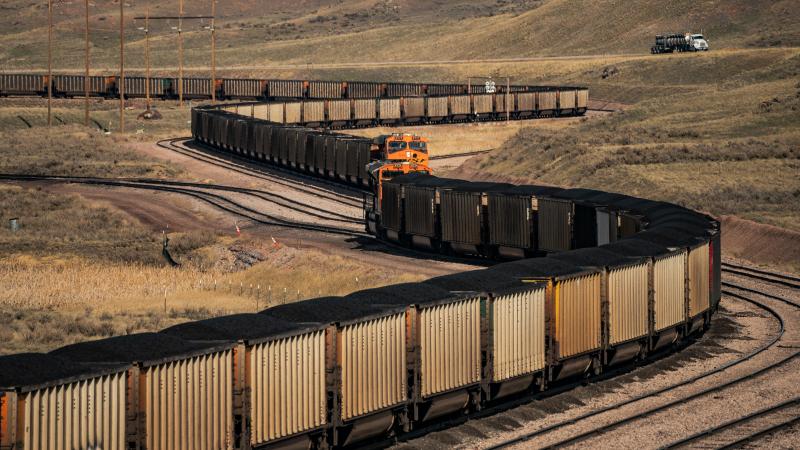‘Wind turbine’s on fire again’: Farmers in Iowa say they can’t get company to clean up blade debris
The two wind turbines have been struck three times by lightning, shattering blades and scattering debris over the family farm. As the blade debris becomes more embedded in the topsoil, the family worries it will contaminate their corn.
Wind turbine blades continue to cause pollution problems for the people living around them. A farm in eastern Iowa has dust and debris from shattered wind turbine blades spread out over 240 acres, and they say the wind farm owner won’t clean it up.
Steve and Teresa Weets, according to The Gazette, agreed in 2012 to an easement allowing Acciona Wind Power to install two turbines on their family farm near Mechanicsville, Iowa. Both turbines have been struck by lightning – one of them twice – over the past 18 months.
The last time it happened was on Aug. 15, and a neighbor called the family early in the morning to say “Your wind turbine’s on fire again.”
Now that the harvest is underway, the debris is hurting the family’s agricultural business. As the blade debris becomes more embedded in the topsoil, the family worries it will contaminate their corn.
After landowners waited months, Acciona removed one of the foundations, a company spokesperson told The Gazette, and they’re talking with landowners to determine the best way to remove the second foundation. The also spokesperson the process is complicated because the foundations of wind towers are made of concrete and steel.
The family has requested that the company use a crane rather than explosives to remove the second tower because explosives might scatter even more debris over the farm. The company has said a crane isn’t safe.
Cedar County, where Mechanicsville is located, requires a decommissioning bond, but that doesn’t cover cleanup efforts.
Blade pollution has become a growing concern following the disintegration of a blade at the Vineyard Wind project off the coast of Massachusetts' Martha’s Vineyard. Debris from the blade, which broke off and fell into the ocean in July, continues to wash up on the beaches of Nantucket, New York and Rhode Island.
Data on blade failures is hard to come by, but according to a 2018 article in a trade publication, blades have a 0.5% failure rate.
At the time, 700,000 blades were spinning at wind farms around the world. Since then, the amount of electricity generated from wind energy has increased approximately 80%. While it’s hard to say how many more blades are spinning today based solely on increases in the amount of electricity produced, there would be roughly 1.27 million blades today. That means over 6,300 blades break off of turbines each year across the world.
MassLive reports that a Nantucket board is hiring damage experts to assess the economic harm to the area’s fishing and tourism industries, as well as economic harms the incident caused. Nantucket’s government is also researching the likelihood that other blades could break off in the future.
The blade was produced by GE Vernova, which also manufactured another blade that broke off a turbine at the Dogger Bank project off the coast of England. That was the second blade to break on that project. GE Vernova blamed the Vineyard incident on a "manufacturing deviation,” but the company blamed installation and operational errors for the Dogger Bank blade failures.
The Vineyard Wind project currently has five turbines operational out of a planned 62. The New Bedford Light last week reported that one of the vessels that deliver the towers, nacelles and 300-foot long blades to Vineyard Wind was seen carrying at least two blades out of the Port of New Bedford. Citing vessel tracking data, the Light reported that the ship wasn’t headed to the Vineyard Wind project, but rather to a port in France, where GE Vernova has a blade manufacturing facility.
Neither GE Vernova nor Vineyard Wind responded to the Light’s request for comment on why the blades were returning to France.
Even when wind blades don’t fail, they present a waste problem, as they are difficult, if not impossible, to recycle. A 2017 study estimated that by 2050, the wind industry could produce 43 million tons of used blades. Blade recycling programs are looking at using shredded blades as filler, or making furniture or other items out of them, but no long-term solution has yet been found.
The Facts Inside Our Reporter's Notebook
Links
- according to The Gazette
- following the disintegration of a blade
- according to a 2018 article
- MassLive reports
- broke off a turbine at the Dogger Bank
- manufacturing deviation
- installation and operational errors
- New Bedford Light
- vessel tracking data
- if not impossible
- 43 million tons of used blades
- furniture or other items out of them
















